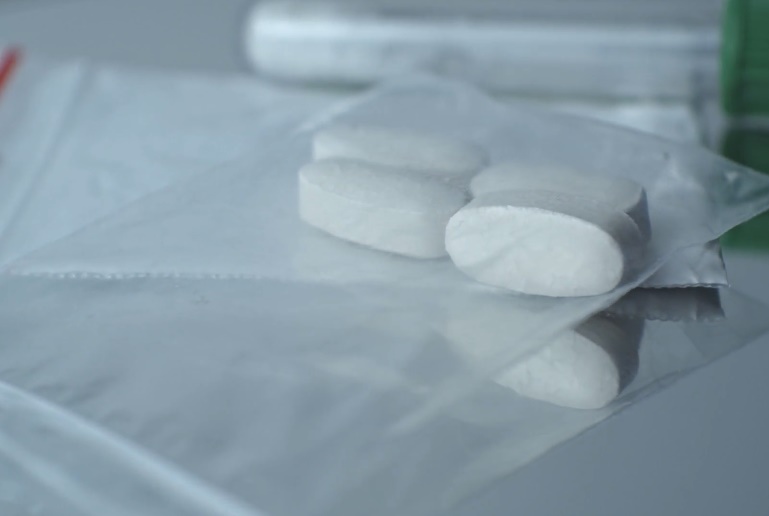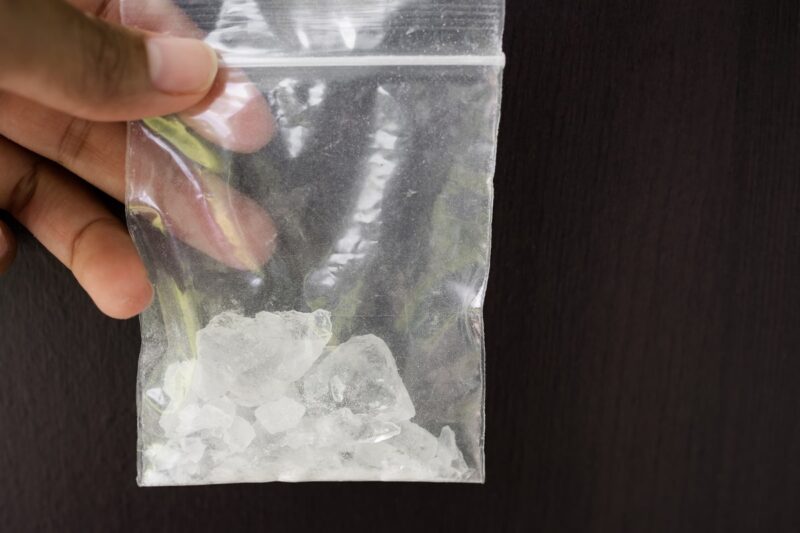Methamphetamine, commonly known as meth, is a powerful stimulant that affects the central nervous system. While its initial effects can be euphoric, the comedown – or the period after the drug’s effects wear off – can be particularly challenging.
In this article, we’ll explore the intricacies of a meth comedown, its symptoms, and the potential remedies.
Chemistry Behind Meth
Methamphetamine is derived from its parent drug, amphetamine. While both drugs increase the release of dopamine in the brain, meth is much more potent. This is due to its ability to cross the blood-brain barrier more efficiently, leading to a more intense and longer-lasting high.
The chemical structure of meth allows it to be easily synthesized, making it a popular choice for illicit drug manufacturers.
How does one feel after using it?
The initial appeal of meth lies in its ability to produce feelings of euphoria, increased energy, and enhanced focus. Users often report feeling invincible or extremely confident. However, these effects are short-lived, and repeated use can lead to a vicious cycle of addiction.
The intense high is followed by an equally intense comedown, pushing users to consume more of the drug to avoid the negative effects.
The Comedown: What Happens?
The comedown from meth is the period when the drug’s euphoric effects start to wear off, and the user begins to experience negative symptoms. This phase can be both physically and mentally taxing.
Physical Symptoms
As the stimulant effects of meth wear off, users often experience extreme fatigue. This is because the drug has been keeping them awake and active for extended periods. Other physical symptoms include:
- headaches
- increased appetite (after not eating for extended periods during the high)
- muscle aches.
Some users also report experiencing “the shakes” or tremors.
Psychological Symptoms
The psychological symptoms of a meth comedown can be even more challenging than the physical ones. Users often report feelings of depression, anxiety, and paranoia. There’s also a marked decrease in the levels of dopamine in the brain, leading to feelings of sadness or hopelessness.
In the throes of these psychological challenges, it’s not uncommon for substance users to struggle with maintaining healthy relationships, often leading to emotional detachment and difficulties in expressing love, a phenomenon similarly observed in those grappling with alcoholism.
Some users may experience hallucinations or become delusional, believing things that aren’t true. In this context, exploring the interplay between personal choice and predetermined factors in substance use can offer additional perspective. Some users may experience hallucinations or become delusional, believing things that aren’t true.
How to Cope with the Comedown?
Dealing with a meth comedown can be a daunting task. However, understanding the process and knowing what to expect can make it more manageable.
Self-Care Strategies
Hydration is crucial during a comedown. Meth can dehydrate the body, so drinking plenty of water can help alleviate some symptoms. Try drinking lemon water, but don’t overdo it as there are disadvantages that can happen. Eating nutritious meals can also help restore the body’s balance.
While it might be tempting to use other substances to cope, this can exacerbate the comedown or lead to other complications. It’s essential to get plenty of rest, even if sleep might be challenging to come by initially.
Seeking Professional Help
If someone is experiencing severe symptoms during a comedown, such as suicidal thoughts or intense hallucinations, it’s crucial to seek professional help immediately. Medical professionals can provide support, monitor the person’s condition, and offer medications to alleviate some of the symptoms.
Additionally, therapists or counselors can provide coping strategies and resources for longer-term recovery.
Long-Term Effects of Meth Use
While the immediate coming down from meth is challenging, prolonged use of the drug can lead to a range of long-term health consequences. Understanding these can be crucial for those considering recovery or supporting a loved one through the process.
Physical Health Consequences
Chronic meth use can wreak havoc on the body. Over time, users may experience significant weight loss due to decreased appetite and increased metabolism. Dental problems, often referred to as “meth mouth,” are common and result from a combination of poor oral hygiene, dry mouth, and increased sugar cravings.
Cardiovascular issues, such as increased heart rate and blood pressure, can lead to heart attacks or strokes. Additionally, the risk of infectious diseases increases, especially if the drug is injected.
Mental Health Implications
The mental health implications of long-term meth use are profound. Chronic use can lead to cognitive deficits, making it challenging for users to think clearly or make decisions. Memory problems, mood disturbances, and aggressive behavior are also common.
Over time, the decreased dopamine levels can lead to persistent feelings of depression or anhedonia, a condition where one can’t feel pleasure.
Social Impact of the Drug
Beyond the individual, methamphetamine use has broader implications for society. The ripple effects of addiction can be felt in families, communities, and even entire regions.
Impact on Families
The addiction doesn’t just affect the user; it impacts their entire family. Children may face neglect or abuse, while spouses or partners often bear the brunt of financial and emotional strain.
The unpredictability of a loved one’s behavior due to meth can lead to a breakdown in trust and communication, often tearing families apart.
Economic and Community Consequences
Communities with high rates of meth use often see increased crime rates, from drug trafficking to thefts committed to support a user’s habit. This can lead to decreased property values and strained community resources, such as law enforcement and healthcare services.
The economic burden also extends to the cost of rehabilitation and social services.
Recovery: The Path Forward
Recovery from the addiction is challenging but not impossible. With the right resources and support, many individuals can rebuild their lives and move forward.
Detoxification and Rehabilitation
The first step in recovery is often detoxification, where the body clears itself of the drug. This process can be intense, and medical supervision is recommended. After detox, rehabilitation can begin.
This might involve inpatient or outpatient treatment, where individuals receive therapy, counseling, and support to address the underlying causes of their addiction and develop coping strategies.
Ongoing Support and Relapse Prevention
Recovery is a lifelong journey. After formal treatment, ongoing support is crucial. This might involve attending support group meetings, ongoing therapy, or staying in a sober living environment.
Relapse prevention is a critical component of this phase. Individuals learn to recognize triggers and develop strategies to cope without turning back to the drug.
Resources and Support for Meth Users and Their Loved Ones
No one has to face this addiction alone. Numerous resources and support systems are available to help individuals and their families navigate the challenges of addiction and recovery.
Hotlines and Crisis Intervention
Several hotlines are available 24/7 to provide immediate assistance to those in crisis. These hotlines can offer support, information, and referrals to local resources. They can be a lifeline for someone in the throes of a comedown or a loved one unsure of how to help.
| Service Name | Description | Contact Information | Additional Info |
|---|---|---|---|
| SAMHSA’s National Helpline | A free, confidential 24/7 service for individuals and families facing mental and/or substance use disorders. | Phone: 1-800-662-HELP (4357) TTY: 1-800-487-4889 | Provides referrals to local treatment facilities, support groups, and community-based organizations. Also offers an online treatment locator. |
| In Crisis? Call or Text 988 | A helpline provided by SAMHSA for individuals in crisis. | Call or Text 988 | – |
| DrugAbuse.com Hotline | A hotline for meth addiction. | Link to DrugAbuse.com | – |
| American Addiction Centers Hotline | A hotline for meth addiction. | Link to American Addiction Centers | Immediate help is available. |
Community and Online Support Groups
Support groups, both in-person and online, can provide a sense of community and understanding. They offer a space for individuals to share their experiences, challenges, and successes.
For loved ones, these groups can provide insight into the nature of addiction and offer strategies for supporting their family members or friends.
Prevention and Education
Preventing meth use is a crucial step in curbing its widespread effects. Education plays a pivotal role in this endeavor, targeting both potential users and the broader community.
School and Youth Programs
Educational programs targeting youth can be particularly effective. By informing young people about the dangers of meth and equipping them with the skills to resist peer pressure, we can reduce the number of new users.
Programs that focus on building self-esteem, resilience, and healthy coping mechanisms can be especially beneficial.
Community Awareness Initiatives
Raising awareness in the broader community is equally important. This can involve public service announcements, community meetings, and collaboration with local organizations.
By fostering a community-wide understanding of the dangers of meth, we can create environments that discourage its use and support those seeking recovery.
FAQs:
How long do withdrawal symptoms typically last?
Symptoms are more severe in the initial days after quitting and then gradually taper off in severity over several days or weeks.
What factors influence the duration and severity of comedown symptoms?
Factors include the amount of meth used, duration of use, previous withdrawal experiences, simultaneous dependency on other substances, and overall health.
Why is detox alone not enough for long-term recovery from addiction?
Addiction is a chronic disease, and relapse is common even after detox. Long-term recovery requires changing ingrained thoughts and behavioral patterns, often achieved through evidence-based therapies in inpatient or outpatient drug rehabilitation treatment.
Are there any FDA-approved medications for treating the comedown?
Currently, there are no FDA-approved medications for treating this.
How do people often attempt to mitigate these effects?
People often use “landing gear” which are depressants (e.g., alcohol and sedatives), opioids, or other substances to induce sleep or decrease levels of anxiety and agitation.
The Bottom Line
In conclusion, while meth comedowns and the broader challenges of addiction are undeniably daunting, there is hope. With understanding, support, and the right resources, recovery is within reach.
Whether you’re personally affected or seeking to support someone else, knowledge is a powerful tool in the journey towards a healthier future.





















